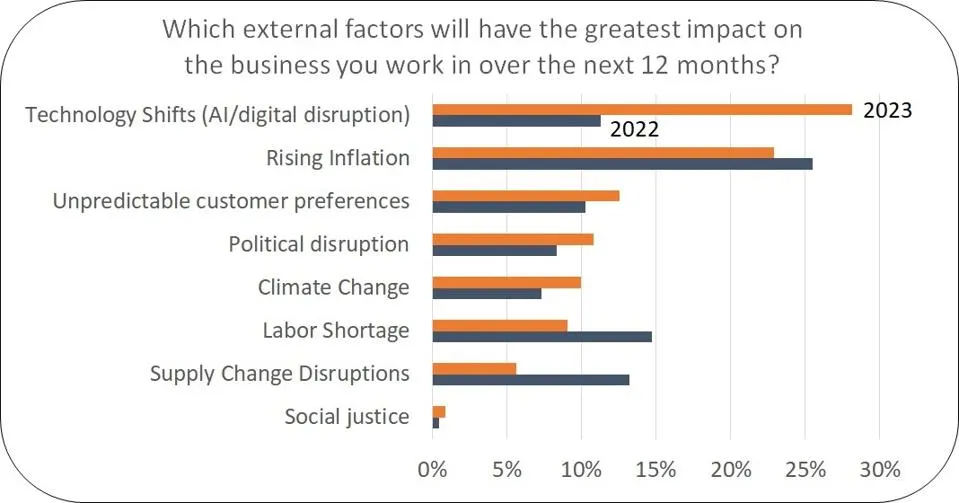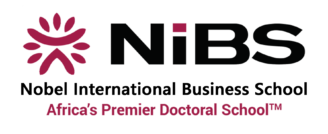The Biggest Challenges Companies Face Right Now: Exclusive C-Suite And Middle Manager Survey
September 7, 2023 2023-09-07 15:14The Biggest Challenges Companies Face Right Now: Exclusive C-Suite And Middle Manager Survey
Source: forbes.com
“Is Rhianna pregnant?” Showbiz fans were desperate to know, making this the second most googled question in the US this year. Executives may be just as curious about the pop star’s love life. But it’s the number one googled question that will give them sleepless nights. “Where is my refund?”
If US consumers want their money back, there are two likely causes. They need to tighten their belts as the cost of living rises, or they are not happy with the products they have received. Either way, it’s a significant problem.
With signs of trouble ahead, I decided to repeat a survey I conducted last year, asking my Warwick Business School network to identify the biggest challenges their companies are facing today. Once again, I included both c-suite executives and middle managers, as the latter are crucial if companies wants to implement effective responses to these challenges. Of the 231 responses, 52% are from senior executives and 48% from middle managers.
How has the landscape changed
Technology shifts are top of the list this year, pushing inflation into second spot. Unfortunately these two challenges—picked by more respondents than the rest combined—are not easily reconciled.

CHRISTIAN STADLER
With many companies wondering how to adjust to AI and digital disruption it is not a big surprise that the number one challenge is technology shifts. This represents a big jump from last year and reflects the hype around large language models such as ChatGPT. To respond to this, companies will be required to make substantial investments and scramble for those with the necessary expertise.
With that in mind, the second challenge on this list presents a particular headache. Inflation has been persistent in most economies. Supply chain issues combined with increased demand right after the pandemic are no longer at fault here. The spotlight is on energy costs and labour shortage. The former drains budgets executives could apply to AI and technology questions. It is a particularly big issue in Europe, where industry continues to rely heavily on Russian gas. The latter is an issue in all aging societies, meaning the West, but US executives are particularly aware of it. They point at labour shortage as their main challenge twice as often as the rest of the world.
Next on the list are unpredictable customer preferences, political disruption, climate change, and labour shortage. Of these, the declining emphasis on labour shortage as an issue is the most notable. This could be a sign of the widely-anticipated recession.
What the difference between managers and executives tells us
Broadly speaking the c-suite and middle managers are on the same page. Two interesting observation require attention though.
First, the two top spots are switched. For middle managers AI and technology disruption is clearly ahead of inflation while slightly more senior executives see inflation as the main challenge. This can create tensions as the actions required to address the two are pointing in rather different directions. To battle inflation primarily points at efficiency drives to keep costs down. New technology on the other hand calls for new investments. Senior executives might be tempted to respond unilaterally in this situation, trying to put out fires. The obvious danger is the risk of alienating staff. Either they leave, putting fuel on the labour shortage issue, or they find ways to derail plans from above.
The smarter response is to open up the strategy making process. This is particularly called for as it is far from obvious how AI can best be used. During the dot com boom everyone rushed to create a website but this obviously does not translate into competitive advantage. Companies need to carefully think how exactly they can use AI. By definition competitive advantage can only arise from a unique approach.
The second observation is that political disruption is considered to be much less of a challenge by middle managers than senior executives. This might simply reflect a division of tasks but nonetheless middle managers have to navigate some of the political minefields. In 2022 for example Raiffeisen, a large Austrian bank, tripled its profits in Russia. How should staff respond when customers confront them? What are the consequences of selling the Russia business? In a hyperpolitical world, middle managers need to be aware about their company’s position.
Winning in an uncertain environment
In early 1970s when America entered a 16-month recession, Bill Gates and Paul Allen developed their concept of easy-to-use computing. The idea—which eventually became Microsoft—helped companies to leverage the new technology in a way not possible before.
Today, there is once again new technology and we don’t quite know how to use it. And once again, we are heading into a recession—or at least that’s what conventional wisdom suggests based on the inflation fighting measures from central banks.
The dual challenge which the survey clearly identified presents a rare opportunity. Companies are forced to revisit their playbook. The old solutions no longer work. Those with ideas how to apply AI in a smart way are likely to come out on top. So rather than worrying, seize the day.








